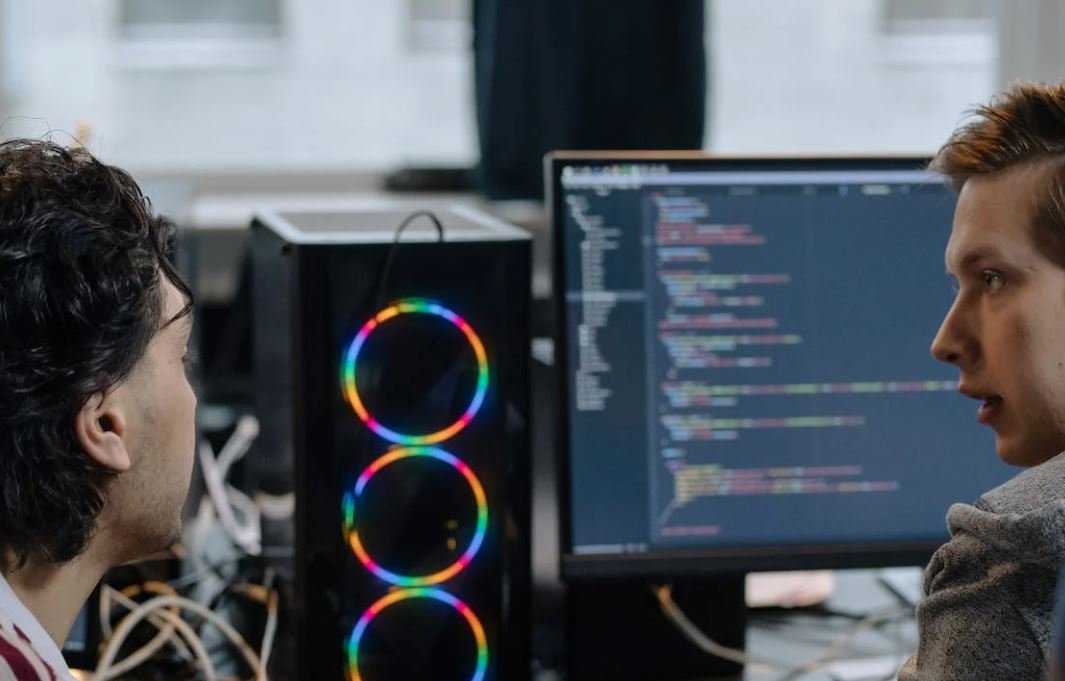AI Deepfake Problems
Artificial Intelligence (AI) has made significant advancements in recent years, but with these advancements come new challenges. One of the most concerning issues is the rise of deepfake technology, which allows for the creation of highly realistic fake videos or images. This poses significant risks for various domains such as politics, media, and cybersecurity. Understanding the problems associated with AI deepfakes is crucial to ensure the responsible use of this powerful technology.
Key Takeaways
- AI deepfakes are highly realistic fake videos or images.
- Deepfakes can pose significant risks in areas such as politics, media, and cybersecurity.
- Understanding the problems associated with AI deepfakes is essential for responsible technology use.
*AI deepfakes have the potential to spread misinformation and manipulate public opinion. While AI technology has enabled incredible advancements, it has also given rise to the creation of convincing fake videos or images. These deepfakes can be used to spread misinformation, defame individuals, or manipulate public opinion for political or personal gain. The high level of realism makes it difficult to differentiate between real and fake content, making deepfakes a significant concern for societies worldwide.
The Ethical Dilemma
Deepfake technology raises serious ethical concerns. *The ability to create realistic fake videos or images undermines trust and raises questions about the authenticity of visual media. Detecting deepfakes is a challenging task that requires sophisticated algorithms and AI tools. The spread of deepfakes can have detrimental effects on public trust, media credibility, and the fabric of democratic societies.
To further understand the problem, let’s explore the key challenges posed by AI deepfakes:
- **Misinformation:** Deepfakes can be used to manipulate public opinion by spreading false information or creating fake news.
- **Privacy Violations:** AI deepfakes can violate an individual’s privacy rights by generating fraudulent content without their consent.
- **Fraud and Scams:** Cybercriminals can use deepfakes for financial scams, identity theft, or impersonation.
- **Political Manipulation:** AI deepfakes can be employed to undermine political stability or manipulate public sentiment.
- **Authenticity Crisis:** The rise of deepfakes challenges the authenticity of visual media, making it difficult to trust what we see.
*The impact of deepfakes extends beyond individuals and societies. Businesses and organizations must also grapple with the consequences. From reputational damage to financial losses, the implications of AI deepfakes can be severe.
The Fight Against Deepfakes
To combat the challenges posed by deepfakes, various approaches are being explored:
- Developing Advanced Detection Tools: Researchers are creating advanced algorithms and AI-based techniques to detect and authenticate manipulated media.
- Enhancing Media Literacy: Educating people about deepfakes and providing tools to help them identify and question the authenticity of visual content.
- Collaborative Efforts: Governments, researchers, and technology companies are working together to address the deepfake threat through partnerships and information sharing.
*As technology continues to evolve, so do the capabilities of AI deepfakes. It is crucial to stay vigilant and adapt countermeasures to ensure a secure and trustworthy digital environment.
Data on Deepfake Attacks
| Date | Location | Target |
|---|---|---|
| 2020 | United States | Political Candidate |
| 2019 | India | Celebrities |
| 2018 | United Kingdom | Journalist |
Impact of Deepfakes on Social Media
| Platform | Countermeasures |
|---|---|
| Partnering with fact-checkers and AI algorithms for content analysis. | |
| Implementing policies against synthetic and manipulated media. | |
| YouTube | Removing deepfake content violating community guidelines. |
Conclusion
*AI deepfakes pose significant challenges, from the spread of misinformation to the erosion of trust in visual media. However, through collaborative efforts, advanced detection tools, and enhanced media literacy, we can mitigate the risks associated with this technology. It is imperative that we stay vigilant and work together to ensure responsible AI usage, protecting individuals, societies, and businesses from the damaging effects of deepfakes.

Common Misconceptions
Misconception: AI Deepfake is a new phenomenon
One common misconception about AI deepfakes is that they are a recent development. In reality, the concept of altering or manipulating visual content has been around for decades. However, the advancement in machine learning and artificial intelligence algorithms has greatly improved the quality and accessibility of deepfakes.
- Deepfakes have gained significant media attention recently, but the technology has been in development since the 1990s.
- AI deepfakes started gaining prominence with the development of Generative Adversarial Networks (GANs), which revolutionized the field of image generation and manipulation.
- The rise of social media platforms and online video sharing has increased the spread and concern of AI deepfakes in recent years.
Misconception: AI Deepfakes can be used only for malicious purposes
Many people believe that AI deepfakes are purely harmful and used solely for deceptive activities. While it is true that deepfakes can be misused for malicious purposes such as spreading misinformation or defaming individuals, they also have potential applications in various positive fields.
- AI deepfakes can be used for entertainment purposes, such as creating realistic special effects in movies or enhancing virtual reality experiences.
- In the field of forensics, deepfake technology can help analyze and reconstruct encrypted or damaged visual data.
- Researchers are exploring the use of AI deepfakes in medical simulations and training, allowing doctors and surgeons to practice complex procedures without risking real patients.
Misconception: Detecting AI Deepfakes is straightforward
There is a belief that detecting AI deepfakes is a relatively simple task for experts and technologies. In reality, the detection of deepfakes is an ongoing challenge, as the technology used to create deepfakes keeps evolving, becoming increasingly more sophisticated.
- Traditional methods of detecting deepfakes, such as looking for visual artifacts or inconsistencies, can be easily countered by improving the AI algorithms.
- Detection models need to be constantly updated and trained on new deepfake variations to stay effective.
- Adversarial attacks can be employed to fool even the most advanced deepfake detection systems.
Misconception: AI Deepfakes always result in highly convincing and undetectable content
While AI deepfakes have gained notoriety for their ability to create realistic and convincing content, not all deepfakes are flawless or undetectable. The quality and believability of deepfakes can vary depending on various factors, such as the expertise of the creator, the available training data, and the specific technology used.
- Some AI deepfakes may exhibit visual artifacts or inconsistencies that can be detected upon careful examination.
- The creation of high-quality deepfakes often requires a substantial amount of computing power and time, limiting their accessibility to the average user.
- Advancements in deepfake detection technologies have made it harder for creators to produce flawless deepfakes without being flagged.
Misconception: AI Deepfakes are the greatest threat posed by AI
While AI deepfakes pose legitimate concerns, they are not the only threat associated with artificial intelligence. It is important to recognize that there are other significant ethical, societal, and security challenges that arise from the advancement and deployment of AI technologies.
- AI-powered autonomous weapons systems raise ethical questions and the potential for autonomous warfare.
- Data privacy and security concerns around the collection and use of personal data for AI algorithms extend beyond AI deepfakes.
- Unemployment and job displacement caused by automation and AI-driven technological advancements have wide-ranging social implications.

AI Deepfake Problems: An Overview
AI deepfake technology has become increasingly sophisticated, allowing for the creation of highly realistic fake videos and images. This has raised significant concerns regarding privacy, security, and the potential for malicious use. The following tables provide an insight into some of the key issues surrounding AI deepfake problems.
Case Studies: High Profile Deepfake Instances
This table highlights several prominent instances in which deepfake technology has been misused for various purposes, ranging from political manipulation to revenge porn. These cases serve as a reminder of the potential harm that AI deepfakes can cause.
| Case | Date | Impact |
|—————————-|————|————————————————————————————————————-|
| Political Manipulation | 2019 | Deepfakes of political figures circulated on social media, affecting public perception and trust in elections |
| Revenge Porn | 2020 | Deepfake videos created and shared without consent, leading to emotional distress and reputation damage |
| Financial Fraud | 2021 | Deepfake audio used to deceive individuals into transferring money to fraudulent accounts |
| Celebrity Impersonation | 2018 | AI-generated videos made headlines, confusing the public and causing controversy |
| Business Disruption | 2022 | Deepfake audio messages sent to employees, resulting in chaos and disruption within organizations |
Deepfake Detection Methods
Efforts are being made to develop effective techniques to detect and counter the spread of AI deepfakes. This table presents some of the methods currently being used or explored by researchers and tech companies.
| Method | Description |
|————————-|——————————————————————|
| Facial Analysis | Analyzing facial features and inconsistencies for deepfake signs |
| Metadata Examination | Tracing digital footprints and analyzing metadata |
| AI-based Classification | Training machine learning algorithms to identify deepfake patterns|
| Voice Analysis | Detecting anomalies in speech patterns and vocal tonalities |
| Watermarking | Embedding unique identifiers to prove authenticity |
Legislative and Regulatory Measures
Governments around the world have recognized the pressing need to address the threats posed by AI deepfakes. The following table outlines some of the legislative and regulatory measures put forth to tackle this issue.
| Country | Measures |
|—————–|——————————————————————————————–|
| United States | Proposals to criminalize the creation and distribution of deepfakes |
| European Union | Drafting regulations to protect individuals’ privacy and prevent deepfake-related harm |
| South Korea | Introducing legislation to ban the malicious use of deepfake technology |
| Australia | Establishing penalties for the creation and distribution of non-consensual deepfake content |
| India | Proposing amendments to existing laws to address deepfake-related offenses |
Deepfake Impacts on Privacy
AI deepfakes raise significant concerns regarding privacy both at an individual and societal level. The table below highlights some of the key impacts on privacy resulting from the spread of deepfake technology.
| Privacy Concern | Description |
|————————-|——————————————————————————————————–|
| Identity Theft | Deepfakes can be used to impersonate individuals, leading to the theft of sensitive personal information|
| Reputation Damage | False or malicious deepfakes can tarnish an individual’s reputation and cause harm to their image |
| Blackmail and Extortion | Deepfake content can be leveraged to blackmail or extort individuals into fulfilling certain demands |
| Psychological Impact | The emotional distress caused by seeing oneself or loved ones manipulated in deepfakes |
| Consent and Privacy Laws| Conflict with existing laws on consent and privacy, as deepfakes are often made without permission |
Deepfake Countermeasures
To combat the growing threat of AI deepfakes, various countermeasures are being developed. This table presents some of the ways in which organizations and individuals are working to mitigate the risks associated with deepfake technology.
| Countermeasure | Description |
|——————–|———————————————————————————————–|
| Public Awareness | Increasing education and awareness campaigns to inform the public about the dangers of deepfakes|
| AI-Driven Solutions| Developing advanced AI algorithms that can detect and distinguish between real and fake content |
| Partnerships | Collaborating with technology companies and research institutions to share knowledge and tools |
| Forensic Analysis | Employing forensic experts to analyze deepfake evidence and provide reliable authentication |
| Ethical Guidelines | Creating and promoting ethical guidelines for the responsible use of AI deepfake technology |
Future Implications and Challenges
The rapid advancement of AI deepfake technology poses serious challenges and raises important questions about the future. This table explores some of the potential implications and hurdles that must be addressed.
| Implication/Challenge | Description |
|—————————-|————————————————————————————————–|
| Misinformation | Deepfakes can contribute to the spread of false information and distrust in media |
| Privacy Erosion | Increasing invasion of privacy as deepfakes become more convincing and difficult to identify |
| Legal and Ethical Dilemmas | Balancing freedom of expression with the need to protect individuals from harm caused by deepfakes |
| Technological Arms Race | The perpetual cat-and-mouse game between deepfake creators and detection techniques |
| Impact on Democracy | The potential to distort political discourse, manipulate elections, and undermine trust in systems |
Conclusion
The rise of AI deepfakes presents a host of problems that require immediate attention. The tables presented above give insights into the emergence of deepfake technology, the countermeasures being developed, and the potential consequences of their misuse. Safeguarding privacy, trust, and societal well-being will necessitate ongoing collaboration between policymakers, tech experts, and the public. Mitigating the risks associated with AI deepfakes requires a multifaceted approach, combining technological advancements, legislative measures, and public awareness campaigns.
Frequently Asked Questions
AI Deepfake Problems
-
What are the potential problems associated with AI deepfakes?
AI deepfakes pose various problems, such as misleading information, privacy concerns, and potential misuse for fraudulent activities. The ability to alter or fabricate videos and images with great precision raises ethical and legal concerns in several domains, including politics, entertainment, and cybersecurity. -
How can AI deepfakes mislead people?
AI deepfakes can mislead people by making it difficult to distinguish between real and manipulated content. They can be used to spread false information, create fake news, impersonate individuals, and manipulate public opinion. -
What are the privacy concerns related to AI deepfakes?
AI deepfakes can violate personal privacy by superimposing someone’s face onto explicit or compromising content without their consent. This can lead to reputation damage, harassment, and blackmail. -
Can AI deepfakes be used for fraudulent activities?
Yes, AI deepfakes can be used for fraudulent activities. For example, scammers can create counterfeit videos to impersonate someone and deceive others into giving away personal information or money. -
How are AI deepfakes created?
AI deepfakes are created by training algorithms on large datasets of real and manipulated video or image samples. These algorithms use neural networks to analyze and learn the patterns, enabling them to generate convincing fake content. -
Is it difficult to spot AI deepfakes?
AI deepfakes can be challenging to spot as they often appear indistinguishable from real content. However, there are techniques being developed to identify signs of manipulation, such as inconsistencies in facial movements, lighting, or audio. -
What measures can be taken to combat AI deepfakes?
To combat AI deepfakes, multiple approaches can be taken. This includes raising awareness about the existence and potential risks of deepfakes, developing advanced detection methods, and implementing legal frameworks to regulate their creation and distribution. -
Are AI deepfakes illegal?
The legality of AI deepfakes varies depending on the jurisdiction and the specific use case. In some countries, creating and distributing deepfakes without consent can lead to legal consequences, especially if they are used for malicious purposes. -
What impact can AI deepfakes have on politics?
AI deepfakes can have a significant impact on politics by compromising trust and spreading disinformation. Deepfake videos can be used to manipulate public opinions during elections, sow discord, and erode trust in political figures. -
Is AI deepfake technology advancing rapidly?
Yes, AI deepfake technology is advancing rapidly. Researchers continue to develop more sophisticated algorithms and techniques, making it easier to create highly convincing deepfakes. This highlights the importance of staying updated on countermeasures and evolving detection methods.




